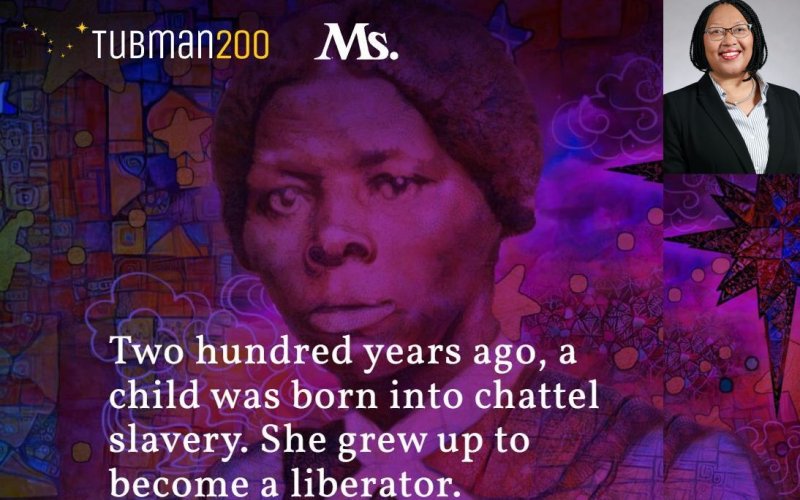Professor’s Research of Harriet Tubman’s Life and Legacy Spurs Bicentennial Project in Ms.

ALBANY, N.Y. (Feb. 3, 2022) — “Two hundred years ago, a child was born into chattel slavery. She grew up to become a liberator. Abolitionist. Diviner. Healer. Nurse. Naturalist. Freedom fighter. Military raid leader. Spy. Scout. Suffragist. Daughter. Sister. Wife. Mother. Aunt. Friend. National Icon. This is the legacy of Harriet Tubman (1822-1913), born Araminta Ross, called Minty in her youth, and heralded as Moses in her extraordinary adult years of emancipatory action.”
So begins Janell Hobson’s tribute, the introduction to the Harriet Tubman Bicentennial Project, a special commemorative issue of Ms. magazine, in print and an interactive online site. Dubbed “Tubman 200,” the project includes an essay series focusing on Tubman’s life and legacy that began with Hobson’s piece on Feb. 1 and continues through March 10.
Hobson, professor of Women’s, Gender & Sexuality Studies and the 2021-2022 Community Fellow at the Institute for History and Public Engagement, proposed the bicentennial series to Ms. and, in addition to writing the introduction, is an editor for the entire project.
“I’ve been researching Harriet Tubman ever since I planned a centennial symposium here at the University to mark her anniversary passing in 2013,” Hobson said. “These past nine years, I’ve been attending special Tubman conferences, visiting her birthplace, her home and gravesite in Auburn, N.Y., and I’ve published diverse articles on the subject. She’s the focus of a chapter in my recent book, When God Lost Her Tongue: Historical Consciousness and the Black Feminist Imagination (Routledge, 2021). So it made sense, with her bicentennial birthday in 2022, that I would revisit her legacy, this time within the popular press and not just within academia. As a contributing writer to Ms. who has a working relationship with its editors, they were very receptive to my proposal for this project.”
Hobson calls Tubman “an apt historical symbol for our current age,” whose image will be on the U.S. $20 bill by 2030 as a recognition of her commitment to freedom, both through self-emancipation and the emancipation of others.
“It was during Tubman’s childhood … that a secret network of anti-slavery agents, long in existence, became known as the ‘Underground Railroad.’ Named after the newly built railroad system crisscrossing the country, which began in 1830, it consisted of free and enslaved and Black and white allies who aided self-liberators to free states and Canada,” Hobson writes. “During the decade of the 1850s, Tubman, who self-liberated from slavery in the autumn season of 1849, would return to the South 13 times to rescue approximately 70 people and pass instructions on to 70 more, thus becoming one of the most celebrated of the Underground Railroad agents, or ‘conductors.’”
Essays in the “Tubman 200” project will include a look at her “visions,” possibly caused by the seizures she suffered after an overseer threw a two-pound weight at her head; her ability to navigate by stars; and conversations with artists, historians and Tubman’s descendants. There also are interactive features, including a timeline of Tubman’s life and an estimation of how much she would be owed had she been paid for her years of labor.
“I’m just really excited and honored to mark an important year for such an important figure in our culture,” Hobson said. “And I’m finding ways to extend my role as an educator beyond the classroom, from offering to the public essays by diverse scholars to interactive features like poetry, a calculator, a history timeline. This is what interdisciplinary learning looks like within the field of women’s, gender and sexuality studies. I also get to involve my graduate students in my research seminar who will collaborate with me on the project’s Harriet Tubman Syllabus. I believe this will be a great opportunity for my students to engage in research in real time and to extend their learning beyond classroom walls.”
Tubman’s exact birth date 200 years ago is unknown. “Born in either late February or early March in 1822, Tubman is the bridge between Black History and Women’s History months,” Hobson writes. “She stood at the intersection of race and gender and ushered in freedom for all because her own freedom required it.”




